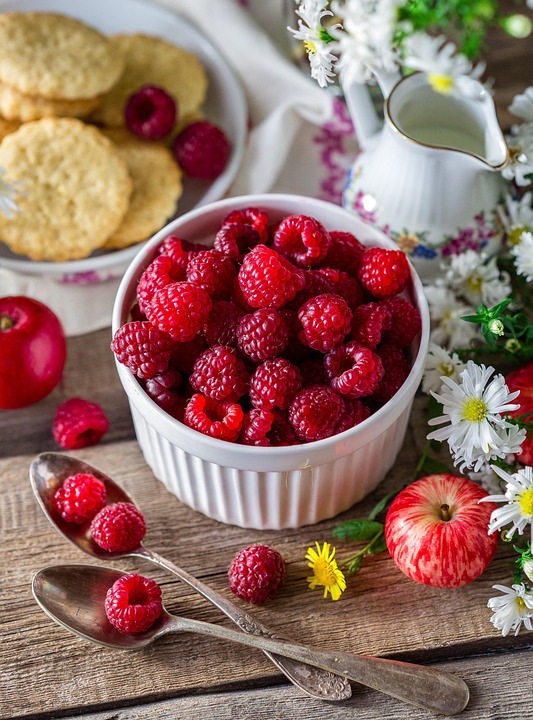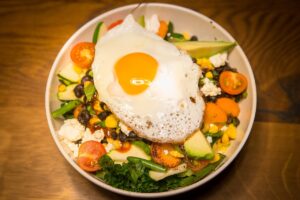
Iron is an essential mineral that plays a critical role in the growth and development of children. It is a key component of hemoglobin, the protein in red blood cells responsible for transporting oxygen throughout the body. Without sufficient iron, children may experience fatigue, weakened immunity, and impaired cognitive development. As parents, ensuring that your child receives adequate iron through their diet is crucial for their overall health and well-being.
In this article, we will explore the importance of iron in a child’s diet, identify iron-rich foods, and offer practical tips to incorporate these foods into your child’s meals. By the end of this comprehensive guide, you’ll be well-equipped to boost your child’s health with iron-rich foods.
The Importance of Iron in a Child’s Diet
Iron plays several vital roles in a child’s health:
Energy Production
Iron is crucial for the production of energy in the body. It facilitates the transport of oxygen from the lungs to the rest of the body, ensuring that cells receive the oxygen they need to produce energy. Without sufficient iron, children may feel fatigued and lethargic.
Cognitive Development
Iron is essential for brain development and function. It supports the production of neurotransmitters, which are chemicals that transmit signals in the brain. Adequate iron levels are associated with improved concentration, attention, and learning abilities.
Immune Function
Iron plays a role in maintaining a healthy immune system. It helps in the proliferation and maturation of immune cells, ensuring that the body can effectively fight off infections and diseases.
Growth and Development
As children grow, their bodies require more iron to support the production of new cells, tissues, and organs. Iron deficiency during critical growth periods can hinder a child’s physical development.
Identifying Iron-Rich Foods
There are two types of dietary iron: heme iron and non-heme iron. Heme iron, found in animal products, is more easily absorbed by the body compared to non-heme iron, which is found in plant-based foods. Here is a list of iron-rich foods to include in your child’s diet:
Animal-Based Sources
- Red Meat: Beef, lamb, and pork are excellent sources of heme iron. Opt for lean cuts to reduce saturated fat intake.
- Poultry: Chicken and turkey, especially dark meat, provide a good amount of iron.
- Fish: Tuna, salmon, and sardines are rich in iron and also provide essential omega-3 fatty acids.
- Eggs: Eggs are a versatile source of iron and can be included in various meals.
Plant-Based Sources
- Legumes: Lentils, chickpeas, and beans are excellent sources of non-heme iron and fiber.
- Tofu and Tempeh: These soy products are rich in iron and can be used as meat alternatives.
- Green Leafy Vegetables: Spinach, kale, and Swiss chard are packed with iron and other essential nutrients.
- Nuts and Seeds: Pumpkin seeds, sesame seeds, and almonds provide iron and healthy fats.
- Whole Grains: Quinoa, brown rice, and oatmeal are good sources of iron and provide sustained energy.
Enhancing Iron Absorption
While consuming iron-rich foods is important, it’s equally essential to enhance the absorption of iron in the body. Here are some tips to improve iron absorption in your child’s diet:
Pair with Vitamin C
Vitamin C significantly enhances the absorption of non-heme iron. Include foods rich in vitamin C, such as citrus fruits, strawberries, bell peppers, and broccoli, in meals containing iron-rich foods.
Avoid Calcium-Rich Foods During Iron-Rich Meals
Calcium can inhibit iron absorption. It’s advisable to avoid serving calcium-rich foods like milk and cheese during meals that are high in iron. Instead, offer these foods at different times of the day.
Cook with Cast Iron Cookware
Cooking with cast iron pots and pans can increase the iron content of food, especially acidic foods like tomato sauce.
Limit Tea and Coffee
Polyphenols in tea and coffee can inhibit iron absorption. Encourage your child to consume these beverages between meals rather than during meals.
Practical Tips for Incorporating Iron-Rich Foods
Introducing iron-rich foods into your child’s diet can be both fun and nutritious. Here are some practical tips:
Breakfast Ideas
- Prepare a smoothie with spinach, banana, and orange juice for a vitamin C boost.
- Serve oatmeal topped with nuts and seeds, accompanied by a glass of orange juice.
- Offer scrambled eggs with a side of sautéed kale or spinach.
Lunch and Dinner Suggestions
- Include a serving of grilled chicken or beef stir-fried with bell peppers and broccoli.
- Prepare a lentil or chickpea salad with a squeeze of lemon juice.
- Make a tofu and vegetable stir-fry served with quinoa or brown rice.
Snack Options
- Offer a trail mix made with nuts, seeds, and dried fruits.
- Serve sliced apples with almond butter.
- Provide whole-grain crackers with hummus for dipping.
Understanding Iron Deficiency
Iron deficiency is a common nutritional concern in children and can lead to iron deficiency anemia if left untreated. Symptoms of iron deficiency may include:
- Fatigue and weakness
- Pale skin
- Shortness of breath
- Decreased appetite
- Impaired growth and development
If you suspect your child may be iron deficient, consult a healthcare professional for evaluation and guidance.
Conclusion
Ensuring that your child receives an adequate amount of iron through their diet is essential for their growth, development, and overall health. By incorporating a variety of iron-rich foods and following strategies to enhance iron absorption, you can help boost your child’s health and well-being. Remember, a balanced diet that includes both heme and non-heme iron sources, paired with vitamin C-rich foods, will provide the best nutritional foundation for your child’s development.
Encourage healthy eating habits from a young age, and involve your child in meal planning and preparation to foster a positive relationship with food. With these tips and insights, you’re well on your way to supporting your child’s health with iron-rich foods.
#ChatGPT assisted in the creation of this article.







